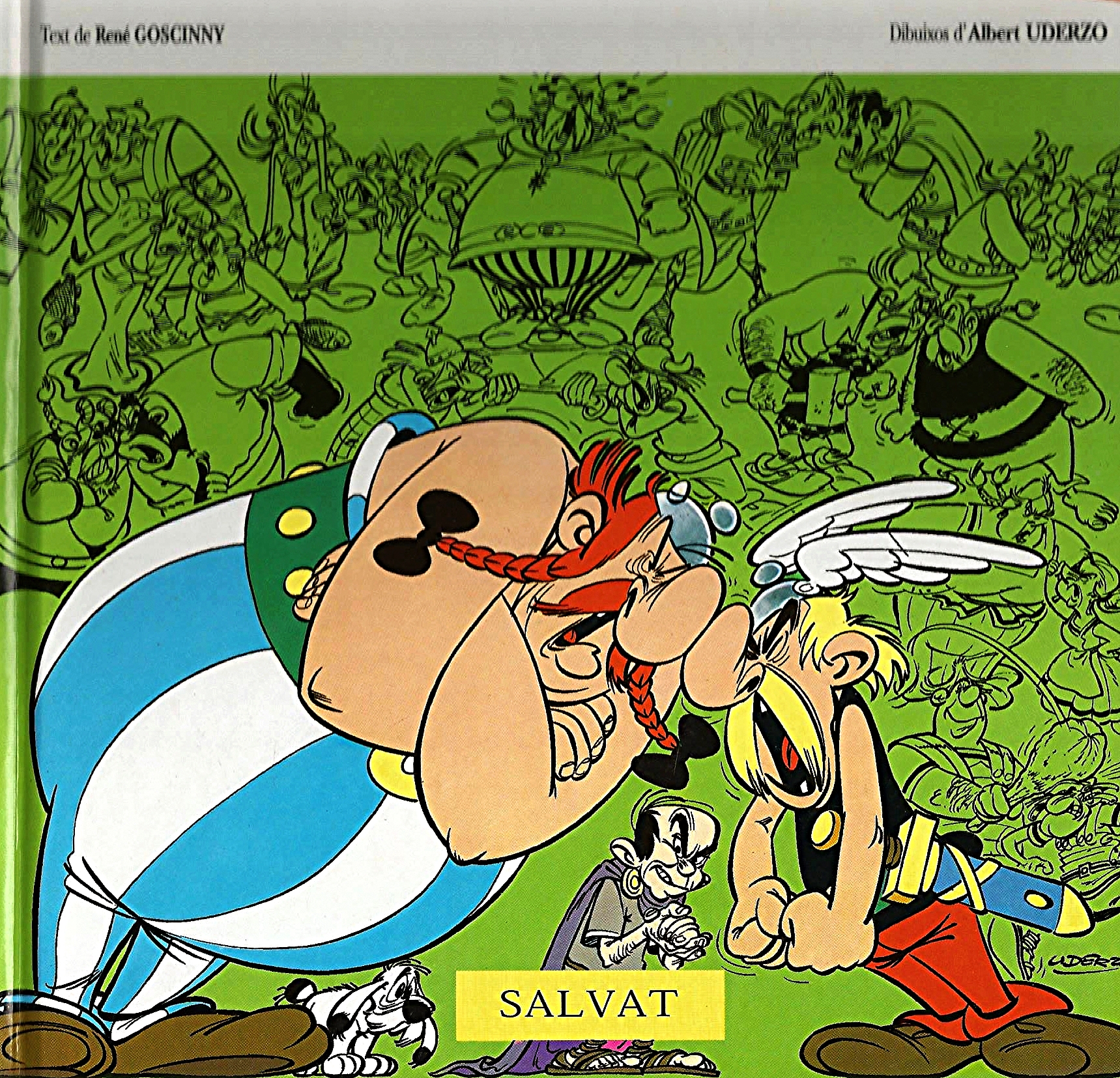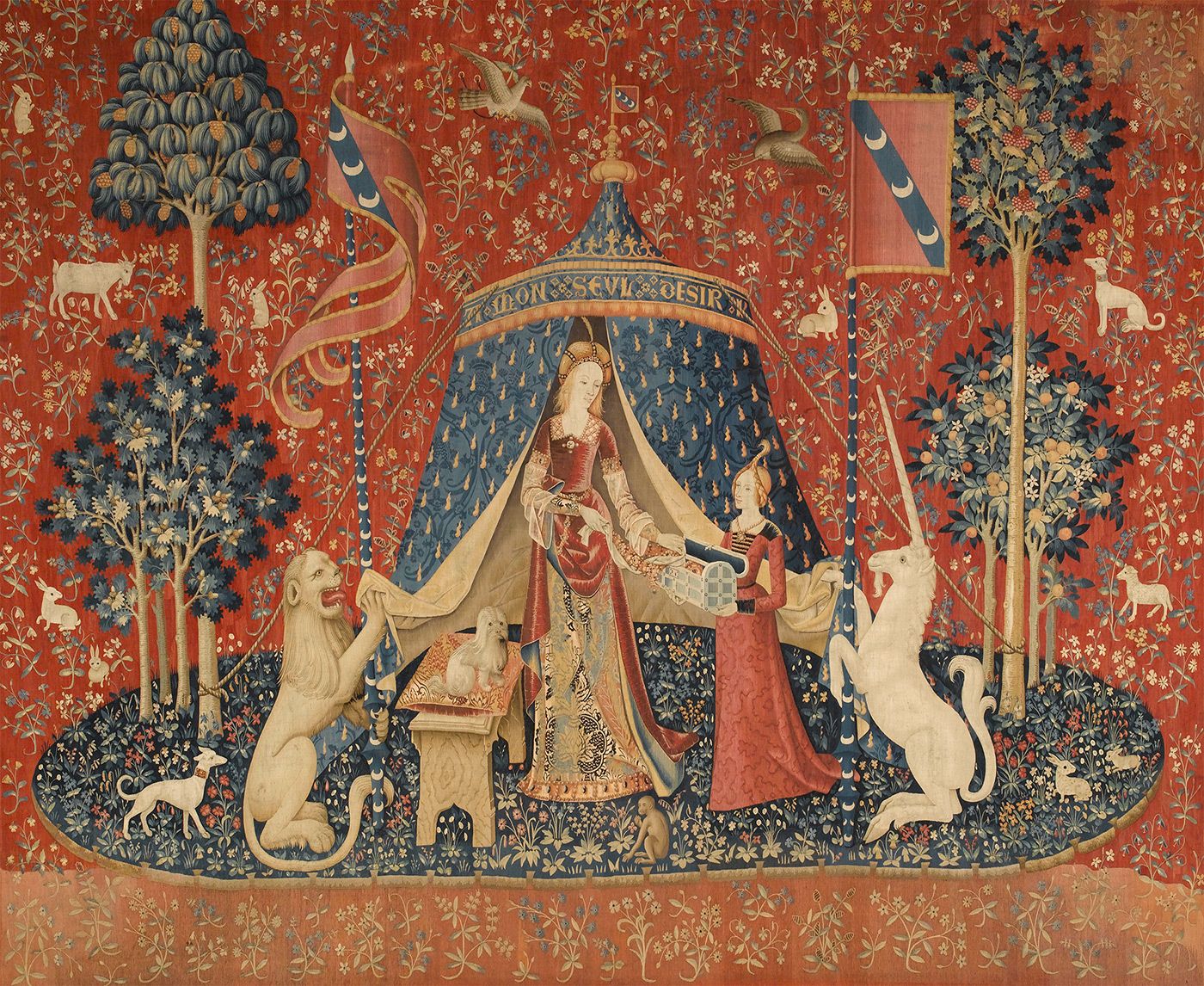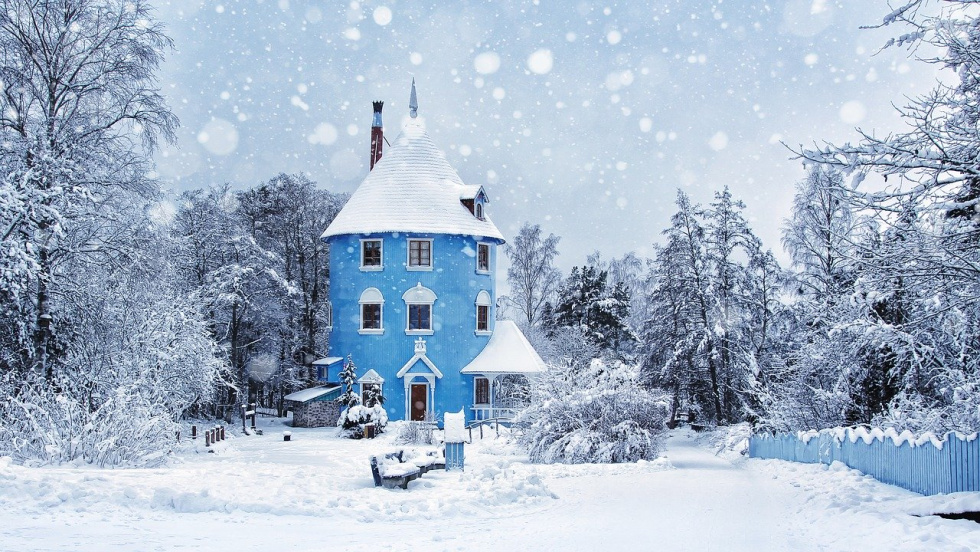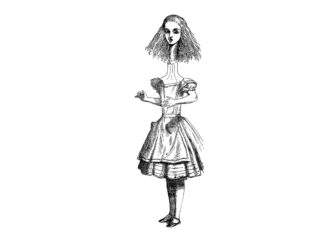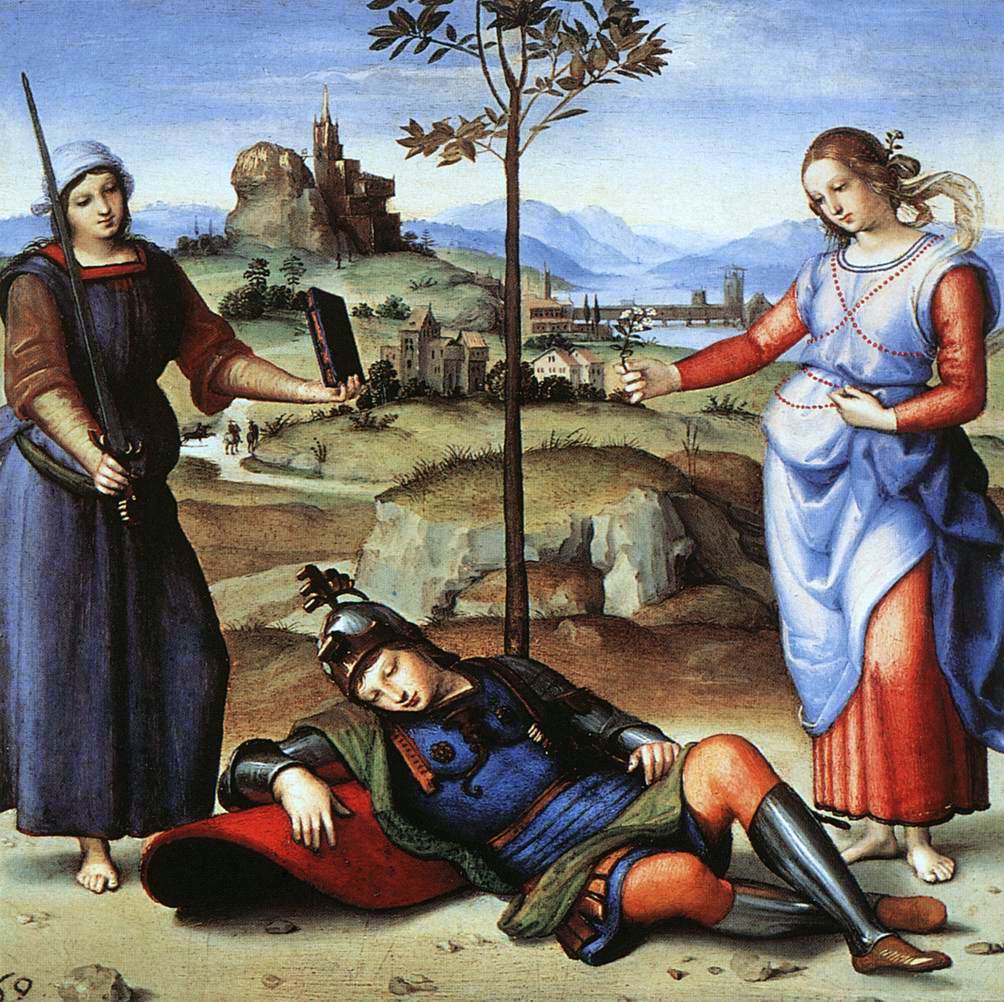
Two belligerent and wine-loving Gallic villagers achieved something that real Celts could not – they conquered the entire world. The comic book series created by René Goscinny is a treasure trove of information about both history and the present.
1
The tiny yet valiant Asterix and his inseparable burly companion Obelix form a characteristic type of pair known since the beginnings of literature. A duo comprising a usually inexpressive protagonist symbolizing civilization and a noisy, uncouth partner appears already in the Babylonian Epic of Gilgamesh, where the eponymous hero travels alongside the half-animal Enkidu. We encounter a similar pattern in the case of Don Quixote and Sancho Panza, or Robinson Crusoe and Friday. Asterix, who is frugal (if not ascetic) in terms of words and gestures, constitutes the very opposite of the talkative, insatiable and impressionable Obelix. This contrast lends the duo its dynamism, which not only creates a comedic effect, but also allows the heroes to overcome formidable obstacles.
2
Unlike the uninhibited Obelix, Asterix is a Kulturträger, a carrier of cultural ideas, spreading various inventions and traditions. He teaches the British how to brew aromatic herbs from the Far East and introduces a ban on bullfights in Iberia. However, before setting out on further voyages, our heroes familiarize us with Gallic culture at home. They owe their good fortune to the magic potion prepared by Getafix, the druid. Just like in the case of other characters living the village, Goscinny created the druid figure by basing him partly on historical research. In the volume Asterix and the Goths, Getafix embarks on a journey to the annual all-Gallic druid assembly in the Forest of the Carnutes (today’s vicinity of Chartres). An account of one such meeting is contained in Julius Cesar’s The Gallic Wars, while the oft-employed image of an old man in white robes cutting mistletoe from an oak with a golden sickle appears in writings by Pliny. The brave chief Vitalstatistix, who claims that all he fears is the sky falling on his head, in fact quotes real Celtic leaders who responded in this way at the court of Alexander the Great.
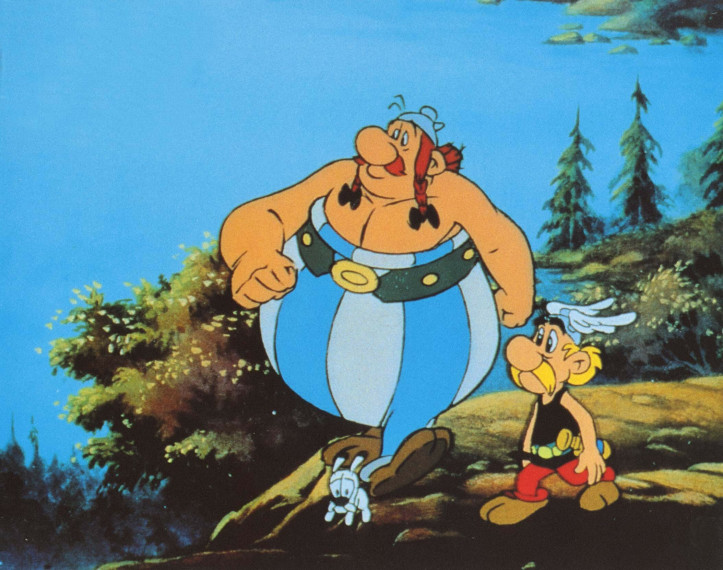
3
When Obelix was a child, he fell into a cauldron full of magic potion, which permanently granted him superhuman strength. However, Asterix can display this kind of might only when he drinks the potion. Thus, the cauldron plays a vital function in the plot. In fact, this vessel was of great importance to the Celts. An inextricable element of druidic culture, it is associated in myths with abundance, good fortune and even immortality. In reality, however, it was used in rather mundane contexts – for example, to store wine during feasts (incidentally, this precious drink obtained from the south functioned as a portal to the spiritual realm). The National Museum in Copenhagen is in possession of one such fabulous cauldron found in Gundestrup, adorned with images showing Celtic gods and mythical creatures.
4
The potion of strength prepared by the druid is not the only concoction he can make. In the first volume, Asterix the Gaul, he prepares a mixture inducing uncontrollable hair growth, which helps him to cleverly escape from the clutches of legionnaires. This trick not only ended Roman hopes of stealing the Gallic superweapon, but also alludes to the traditional division of territories conquered by Roman legions. The victors would distinguish between the tribes closer to them geographically and culturally, calling their region ‘Gallia Togata’ (robe-wearing Gaul), and those living further in the north and less Romanized, whose region was known as ‘Gallia Comata’ (long-haired Gaul).
5
Once, in a fit of madness, Getafix concocted a potion causing one to become as light as a feather (in the volume Asterix and the Big Fight) or change colour. This certainly inspired the psychedelic culture movement, which enshrined him on tabs of acid in the 1990s. In this context, the druid’s original French name Panoramix is also significant, as it suggests the broadening of perception.
6
In the French city of Alesia stands a monument to Vercignetorix. Although this memorial marks the place of Julius Caesar’s victory over the united Gallic tribes, this figure was used to boost propaganda in the Third Republic, bringing the French together around a national myth rooted in Gallic heritage. Vercignetorix appears already in the first volume of Asterix, where he literally lays arms at the feet of Gaius Julius, turning historical defeat into slapstick victory.
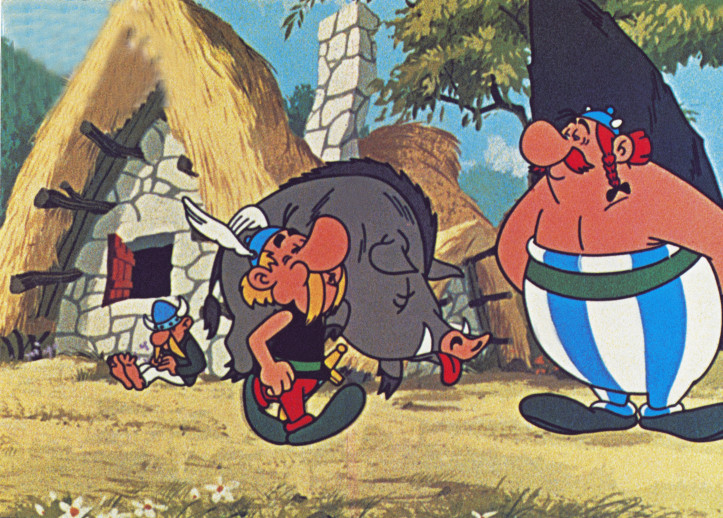
7
The Asterix series devotes a lot of space to culinary matters. Obelix often longingly reminisces about a certain boar dish, especially when he has to have mint sauce with his roast in Britain. His attitude represents the universal disdain that the French have for British cuisine. Faced with foreign customs, Obelix remains distant, shrugging off differences by calling them crazy. Asterix, on the other hand, takes a keen interest in otherness and remains culturally open. Playing with stereotypes often entails the risk of charges that it might also spread them. However, from a broader perspective, René Goscinny and Albert Uderzo praise diversity and stir curiosity about other cultures, despite certain passages being politically incorrect. Their sense of humour is not premised on prejudice. The ironic edge is rather directed at Obelix’s gullibility, naivety and Gallocentrism.
8
It is 50 BCE and the Roman Republic extends from the Near East to the Iberian Peninsula, including the central part of North Africa snatched from the Carthaginians.
In the Asterix comic book series, Romans are the villains as they aim to conquer the last independent Gallic village. They have far-reaching plans, striving to culturally colonize newly acquired territories. In contrast, those living in the oppidum (a Celtic settlement surrounded with a palisade) embody anarchic freedom. They are unruly and eager to fight over trifles like the purchase of a bad fish. The historical guise, however, is used in the series to comment on contemporary processes. Lost in labyrinthine Roman bureaucracy (in The Twelve Tasks of Asterix), the protagonists have to face the newly-installed heartless administration. These hints were perfectly read by French readers, who recognized this not only as an expression of broad resistance to temps modernes (as in Chaplin’s film under this title, or in the Mr Hulot comedies by Jacques Tati), but also as a metaphor of the struggle against Americanization. Opposition from a minority ready to defend their simple life from a technocratic and militaristic majority is an archetypal theme. Its presence in the series must have contributed to its dazzling success: it has sold over 360 million copies around the world. This is particularly visible in The Mansions of the Gods, which was published shortly after May 1968. Additionally, the series offers social satire, ridiculing the bourgeoisie represented by inhabitants of the capital Lutetia, who are overambitious and follow the latest trends. Finally, Romanized Gauls are referenced through the figure of Chief Cassius Ceramix, a reference to occupied France and the Vichy government, who is set to duel Vitalstatistix in the volume Asterix and the The Big Fight.
9
Fortunately, the Gauls enjoyed not only fighting but also feasting. Accordingly, each volume ends with a festive season when villagers bond. As a coda to adventures, feasts symbolize the world’s cyclical return to a state of harmony. At a different level, such gatherings bring to mind the democratic time of carnival, when all can reconcile at the same table despite their differences. Well, perhaps except for the notoriously underappreciated bard Cacofonix.
Translated from the Polish by Grzegorz Czemiel


